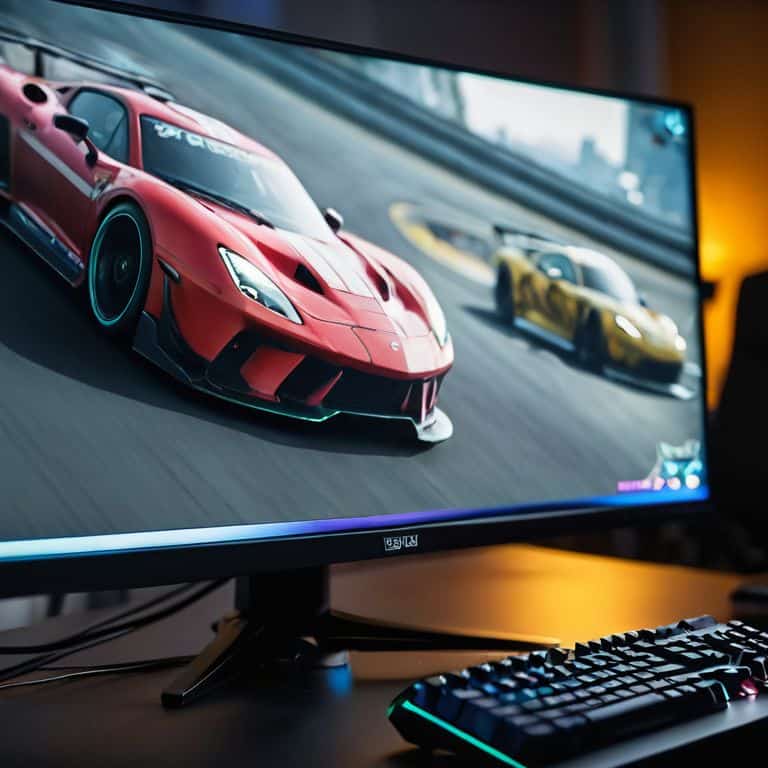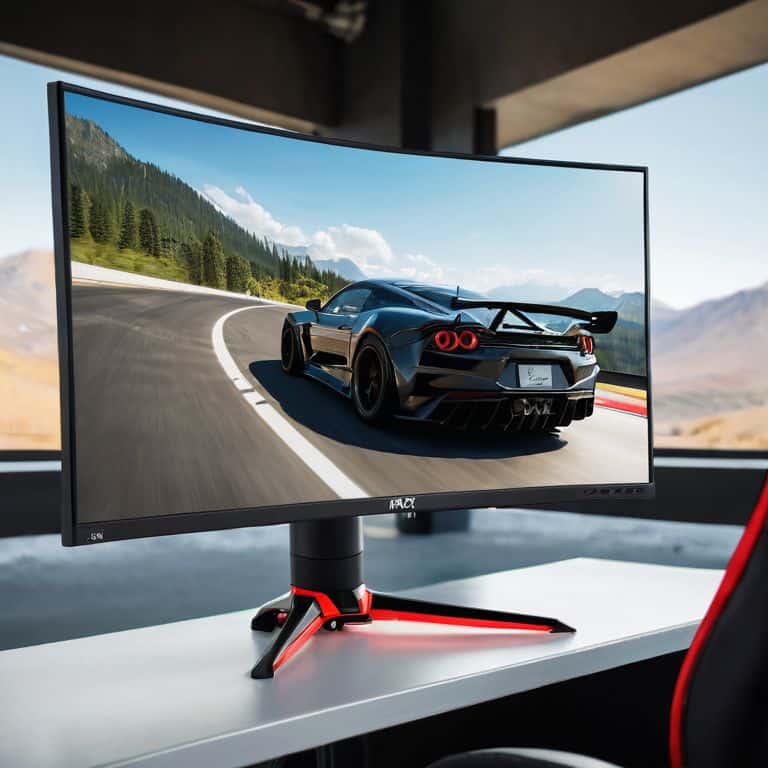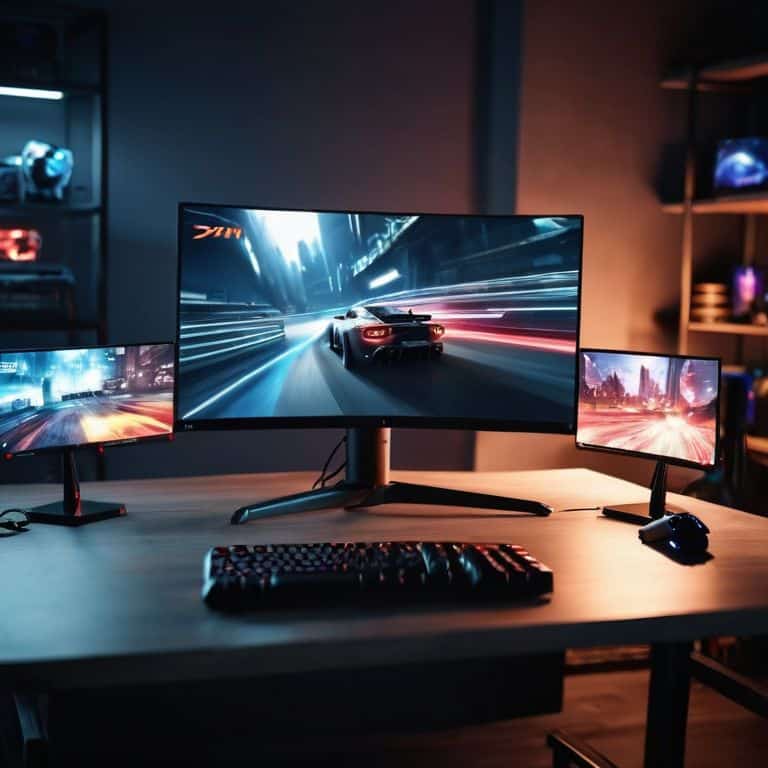I still remember the first time I tried to understand screen refresh rates (hz) – it was like hitting a brick wall. Everywhere I looked, there were complicated explanations and technical jargon that made my head spin. As someone who’s worked with electronics for years, I found it frustrating that something as fundamental as screen refresh rates could be made to sound so _overwhelmingly complex_. It seemed like the experts were intentionally making it difficult for regular people to grasp. But I’m here to tell you that it doesn’t have to be that way.
In this article, I promise to cut through the hype and give you a no-nonsense guide to understanding screen refresh rates. I’ll share my own experiences and use _relatable analogies_ to explain how it all works. My goal is to empower you with knowledge, not to confuse you with technical terms. By the end of this journey, you’ll be able to confidently discuss screen refresh rates and make informed decisions about the technology you use every day. So, let’s dive in and uncover the magic behind those screen refresh rates (hz) – I’m excited to share my passion for demystifying complex tech with you.
Table of Contents
Unlocking Hz Secrets

As we dive deeper into the world of screens, it’s essential to unlock the secrets of Hz. One of the key benefits of a high refresh rate is the reduction of screen tear, which can be frustrating for gamers and viewers alike. To achieve this, methods like screen tear reduction techniques are employed, utilizing technologies such as G-Sync or FreeSync to synchronize the refresh rate with the graphics card.
When it comes to gaming, the optimal refresh rate can make all the difference. A higher refresh rate can provide a smoother experience, reducing motion blur and allowing for faster reaction times. However, it’s crucial to find the right balance, as excessively high refresh rates can be unnecessary and even lead to increased power consumption. By understanding the relationship between refresh rates and graphics card performance, we can optimize our screens for the best possible experience.
In recent years, variable refresh rate technology has emerged, allowing screens to adjust their refresh rate on the fly to match the content being displayed. This innovation has significant implications for reducing power consumption and improving overall viewing experiences. By grasping the fundamentals of Hz and its applications, we can better appreciate the intricate dance between our screens, graphics cards, and the content we enjoy.
High Refresh Rate Benefits Revealed
When we talk about high refresh rates, we’re essentially discussing how often our screens update the image we’re looking at. A higher refresh rate means a smoother experience, which is especially noticeable in fast-paced content like video games or action movies. The reduced motion blur is a key advantage, making it feel like we’re looking at a more realistic and immersive world.
In everyday use, high refresh rates can make a big difference in how we interact with our devices. For instance, when scrolling through a webpage or switching between apps, a higher refresh rate can make the experience feel more seamless, reducing eye strain and making it more enjoyable to use our devices for extended periods.
Screen Tear Reduction Methods Explained
To reduce screen tearing, manufacturers often employ synchronization techniques that ensure the graphics card and monitor work in harmony. This is similar to how a plumber uses the right fittings to prevent leaks in a pipe system – everything needs to be properly connected and timed to avoid any “leaks” or in this case, tears in the display.
When it comes to reducing screen tears, adaptive sync technology plays a crucial role. It helps adjust the refresh rate of the monitor to match the frame rate of the graphics card, resulting in a smoother visual experience. This technology is especially useful in fast-paced games or videos, where screen tearing can be most noticeable.
Mastering Understanding Screen Refresh Rates

As we delve deeper into the world of screens, it’s essential to master the concept of refresh rates. Think of it like a plumbing system, where the water flow represents the frames per second, and the pipes represent the display’s ability to show those frames. When the flow is smooth, you get a seamless visual experience, but when it’s clogged, you notice screen tear reduction methods kicking in to save the day.
To achieve this smooth flow, manufacturers often employ technologies like G-Sync or FreeSync. These technologies help synchronize the frame rate with the display’s refresh rate, resulting in a more fluid experience. It’s like having a smart valve that adjusts the water flow to match the pipe’s capacity, ensuring a high refresh rate benefit without wasting resources.
When it comes to gaming, the optimal refresh rate can make all the difference. A higher refresh rate can reduce motion blur, creating a more immersive experience. By understanding how variable refresh rate explanation works, gamers can optimize their setup for a smoother, more responsive experience. It’s like fine-tuning the plumbing system to ensure the perfect flow, resulting in a more enjoyable and engaging experience.
G Sync vs Free Sync Variable Refresh Rate
When it comes to variable refresh rates, two popular technologies come to mind: G Sync and Free Sync. G Sync, developed by NVIDIA, is a proprietary technology that allows for seamless synchronization between the GPU and the monitor, resulting in a smoother gaming experience. This technology is particularly useful in fast-paced games where the frame rate can fluctuate wildly.
The key difference between G Sync and Free Sync lies in their licensing models. While G Sync is exclusive to NVIDIA graphics cards, Free Sync is an open standard that can be adopted by any manufacturer, making it a more widely available option. This openness has led to a wider range of monitors supporting Free Sync, giving consumers more choices in the market.
Optimal Hz for Gaming Motion Blur Reduction
When it comes to gaming, a high refresh rate can make all the difference in reducing motion blur. This is especially important in fast-paced games where quick movements can cause blurry images on lower refresh rate screens. By increasing the refresh rate, you can enjoy a smoother gaming experience with less blur.
To achieve optimal gaming performance, you need a monitor with a high refresh rate, typically 144Hz or higher. This allows for a more responsive and immersive gaming experience, making it ideal for games that require quick reflexes and precise movements.
5 Essential Tips to Unlock the Power of Screen Refresh Rates

- Choose the right refresh rate for your needs: if you’re a gamer, look for high refresh rates like 144Hz or 240Hz to reduce motion blur and screen tearing
- Understand the difference between G-Sync and FreeSync: both technologies eliminate screen tearing, but they work with different types of graphics cards and monitors
- Consider the resolution and graphics card power when selecting a refresh rate: higher resolutions and more powerful graphics cards can handle higher refresh rates
- Experiment with different refresh rates to find the sweet spot for your eyes: some people may not notice a difference between 60Hz and 120Hz, while others may prefer the smoother motion
- Keep in mind that higher refresh rates don’t always mean better: factors like response time, pixel density, and overall system performance also impact the viewing experience
Key Takeaways: Simplifying Screen Refresh Rates
High refresh rates can significantly enhance your visual experience, especially in fast-paced activities like gaming, by reducing motion blur and screen tearing
Understanding the difference between G Sync and Free Sync, two popular variable refresh rate technologies, can help you choose the best option for your needs and budget
Optimizing your screen’s refresh rate, whether for gaming or general use, can lead to a more immersive and responsive interaction with your devices, and it’s easier to achieve than you might think
The Refreshing Truth
Understanding screen refresh rates is like being the conductor of your own visual orchestra – once you know how to harmonize the frames, you’ll be amazed at how seamless and stunning the performance can be.
Chloe Brennan
Wrapping Up: The Refreshing Truth
As we’ve explored the world of screen refresh rates, we’ve uncovered some fascinating secrets. From the benefits of high refresh rates to the methods of reducing screen tear, and even delving into the differences between G Sync and Free Sync, it’s clear that understanding Hz is key to a smoother, more immersive experience. Whether you’re a gamer seeking to optimize your setup for motion blur reduction or simply someone who wants to grasp the technology behind their devices, the journey to mastering screen refresh rates is both rewarding and enlightening.
As we conclude our dive into the realm of screen refresh rates, remember that the true magic lies not just in the technology itself, but in demystifying the complex and making it accessible to everyone. By embracing this mindset, we can unlock a deeper appreciation for the innovations that surround us, and perhaps, inspire a new generation of tech enthusiasts to explore, create, and push the boundaries of what’s possible.
Frequently Asked Questions
How does a higher screen refresh rate impact battery life on mobile devices?
Think of a higher screen refresh rate like a faucet with a faster flow rate – it uses more water, or in this case, more power. On mobile devices, this means a higher refresh rate can drain the battery faster, similar to how a constantly running faucet empties the water tank quicker.
What is the minimum refresh rate required for a seamless gaming experience on a desktop computer?
For a seamless gaming experience, I recommend a minimum refresh rate of 144Hz, but honestly, 60Hz can be enough if you’re playing less demanding games. Think of it like water flowing through a pipe – higher refresh rates are like wider pipes, allowing for smoother flow, but you need to consider the pressure, or in this case, the game’s graphics demands.
Can a higher refresh rate improve the viewing experience for non-gaming activities like watching movies or browsing the web?
While a higher refresh rate is often associated with gaming, it can also enhance non-gaming experiences. For instance, scrolling through web pages or watching movies with fast-paced scenes can appear smoother, reducing stutter and blur, making for a more enjoyable viewing experience.









